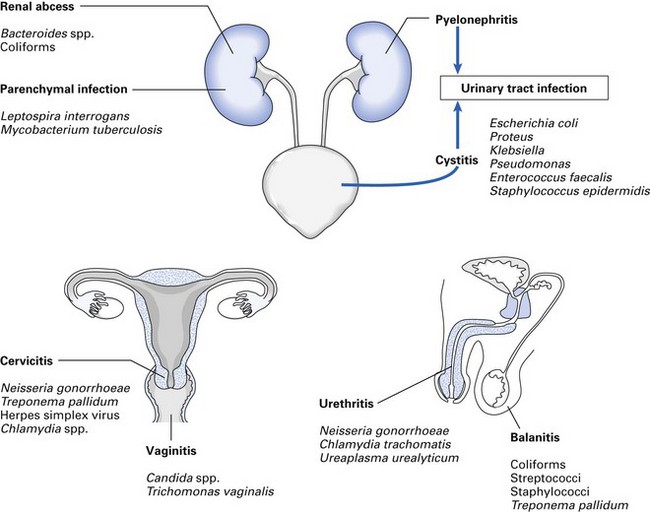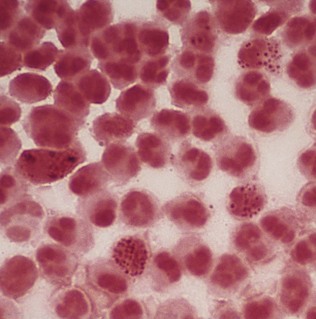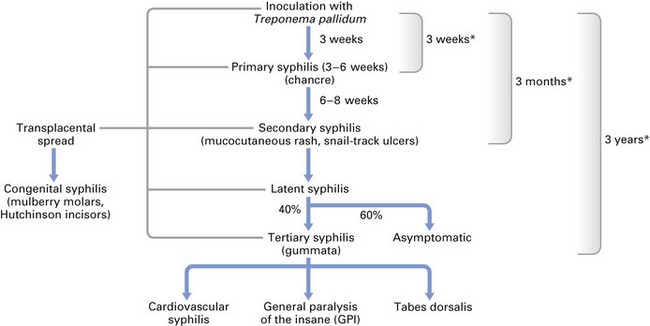Chapter 27 Infections of the genitourinary tract
Normal flora and the natural defences of the genitourinary tract
Important pathogens
Important pathogens are listed in Figure 27.1 and Table 27.1.
| Disease | Agent |
|---|---|
| Bacterial infections | |
| Gonorrhoea | Neisseria gonorrhoeae (the gonococcus) |
| Syphilis | Treponema pallidum |
| Vaginitis | Gardnerella vaginalis, anaerobes |
| Chancroid | Haemophilus ducreyi |
| Viral infections | |
| Genital herpes | Herpes simplex virus (type 2 mainly) |
| Genital warts | Papillomavirus |
| Hepatitis Ba | Hepatitis B virus |
| AIDSa | Human immunodeficiency virus (HIV) |
| Others | |
| Lymphogranuloma venereum | Chlamydia trachomatis types L1–L3 |
| Granuloma inguinale (donovanosis) | Calymmatobacterium granulomatis (a Klebsiella-like microorganism) |
| Pubic lice (crabs) | Phthirus pubis |
| Genital scabies | Sarcoptes scabiei |
| Non-specific urethritis | Chlamydia trachomatis types D–K |
| Trichomoniasis | Trichomonas vaginalis |
| Vaginal thrush | Candida albicans |
AIDS, acquired immune deficiency syndrome.
Sexually transmitted diseases
Gonorrhoea
Gonorrhoea is caused by Neisseria gonorrhoeae (the gonococcus).
Pathogenesis and epidemiology
Diagnosis
Gram smears show Gram-negative pairs of the typical kidney-shaped gonococci inside neutrophils (Fig. 27.2). Swabs from the urethra cultured on lysed blood or chocolate agar yield oxidase-positive, translucent colonies, and rapid carbohydrate utilization tests are also diagnostic (see Chapter 14).
Non-specific urethritis
Clinical features
Acute purulent urethral discharge resembles that of gonorrhoea; cervicitis occurs in women.
Stay updated, free dental videos. Join our Telegram channel

VIDEdental - Online dental courses





